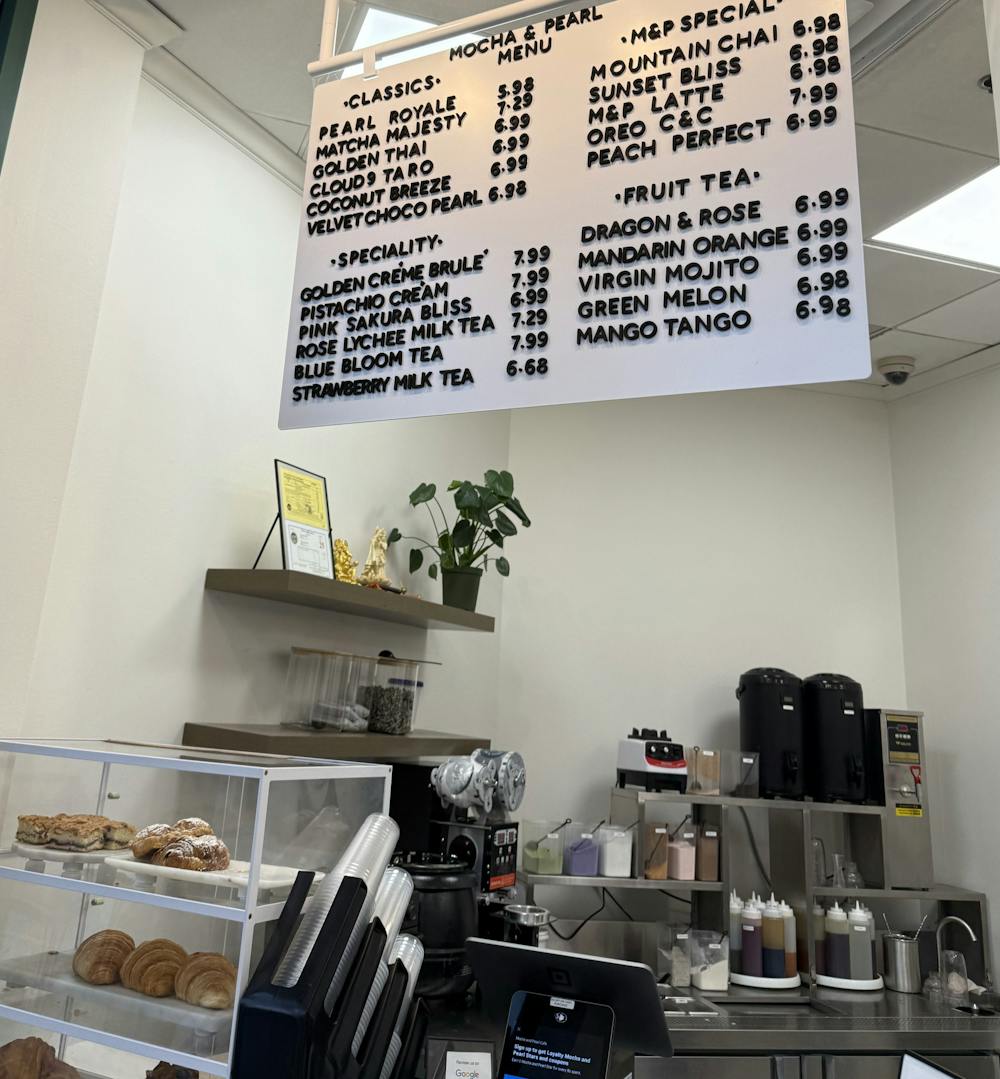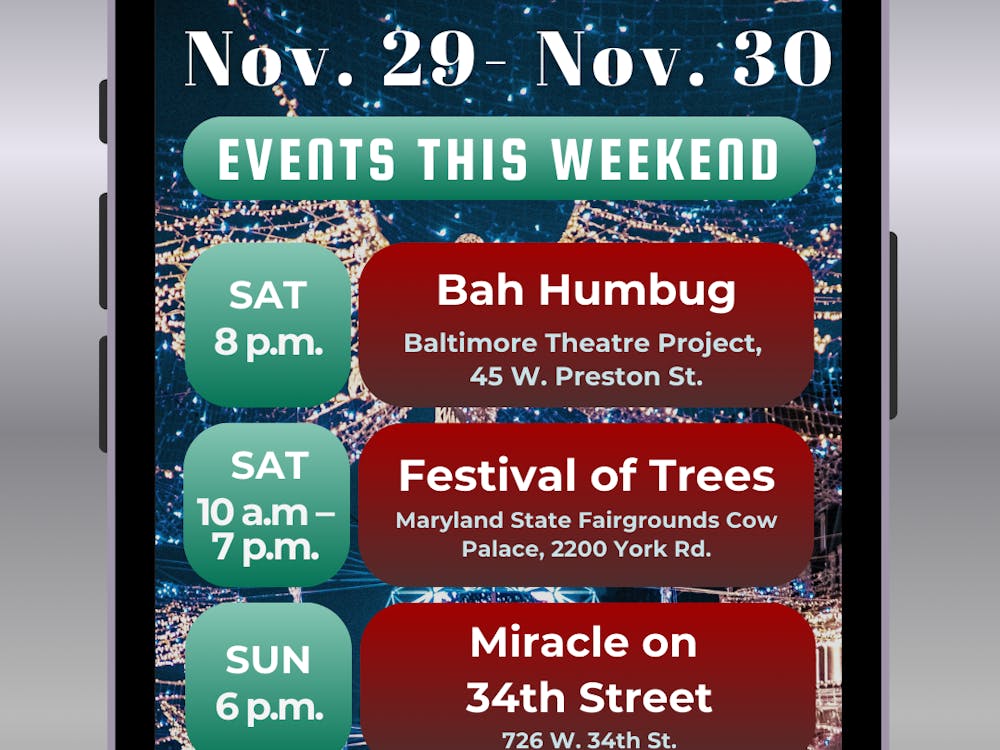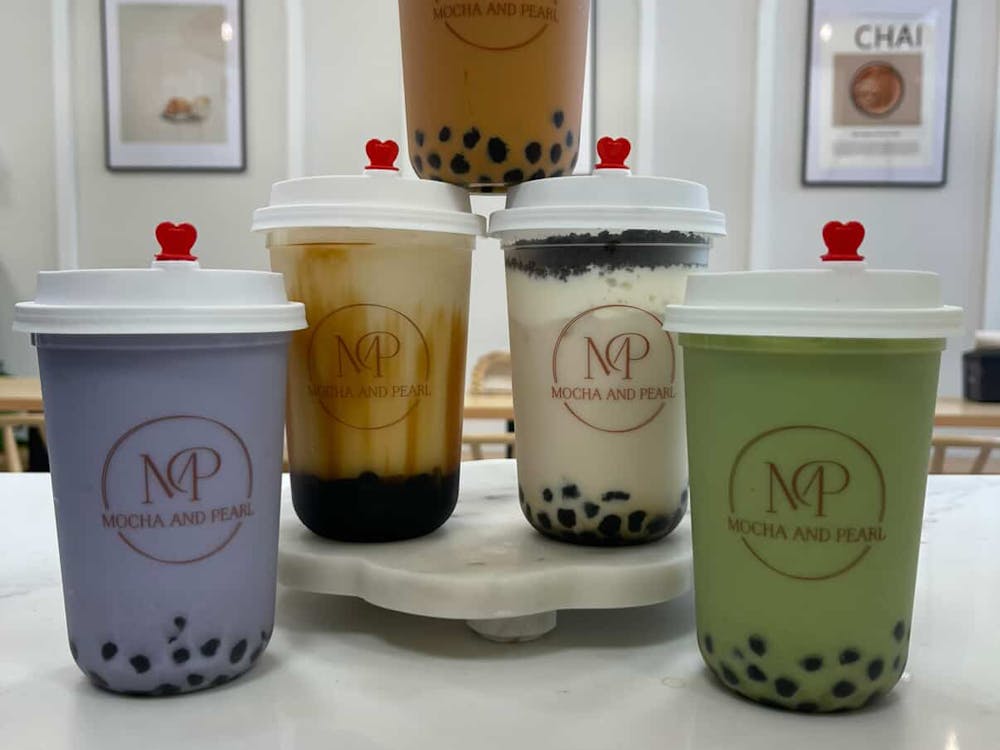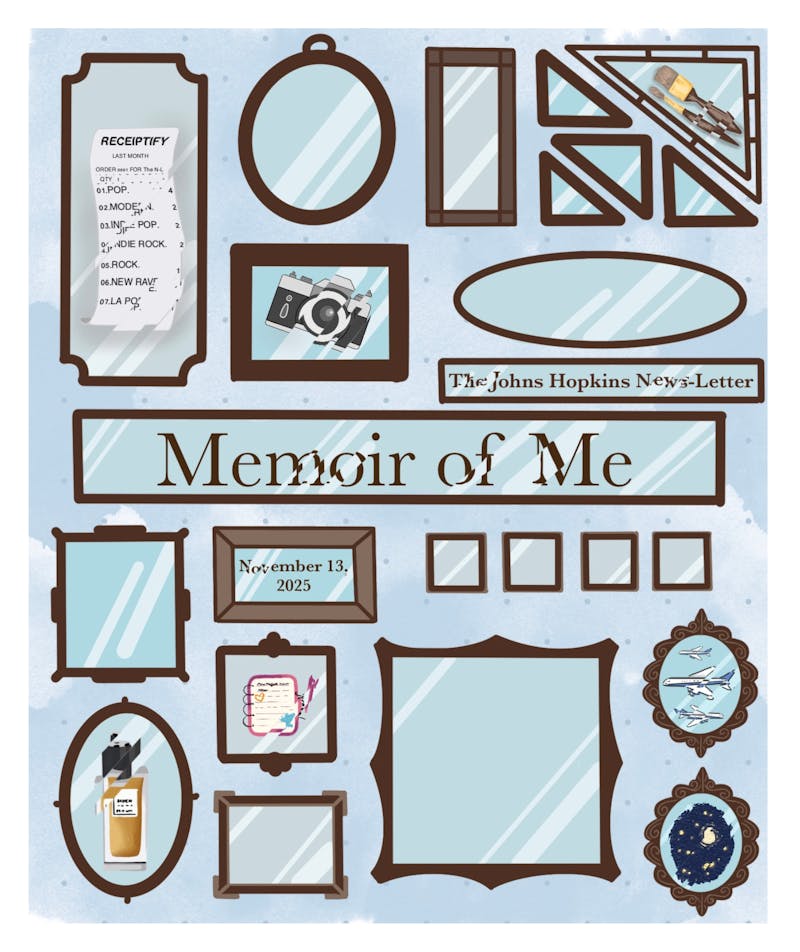During the first week of college, my roommates and I walked to Kung Fu Tea. We had just moved into our dorms and barely knew the city, but boba felt like a safe place to begin. I ordered my usual: brown sugar milk tea with 50% sugar and light ice.
It did not taste bad. But it did not taste like home.
The tea was watery. The boba did not have the chew I was expecting. I drank it anyway, sitting beside people who would later become my best friends. That first sip stayed with me. It was the moment I realized I was homesick — not for a person or a place, but for a flavor, a texture or something that should have felt familiar even though it did not.
I am from the Bay Area, where boba shops are everywhere. Everyone has a favorite place and a favorite order. I moved to California from India when I was eleven, and one of my first after-school hangouts was in a local plaza with a boba shop. I did not know what to order, but they offered samples. I tried lychee rose green tea and was hooked.
At first, I stuck to fruit teas. Then, I discovered brown sugar milk tea. It was rich, slightly warm and sweet in a way that made everything else feel like background noise. By high school, boba was part of my rhythm. I got it after school, during study sessions or on lazy weekends. My favorite spot was family-owned. You could see the staff in the back, rolling boba dough by hand. The pearls always came out warm.
I did not expect to miss something so small.
In Baltimore, I searched for that same feeling. I tried a dozen places. Some tea tasted more like syrup. Some pearls were too hard or too soft. One drink came out gray — not matcha, just gray.
Back home, I never thought about the details. Here, I started noticing everything: the weight of the cup, the softness of the pearls or whether the tea actually tasted brewed. It became a quiet habit of measuring each drink against the memory I carried, of measuring my homesickness in sugar levels.
That is the part I miss most — the ease of walking into a shop and knowing what to expect. During move-in day at Hopkins, I was working as a campus tour guide when I met a freshman and her mom from the Bay. The mom laughed and said, “She’s already worried about finding good boba here.” The student nodded and said, “We’re definitely spoiled.” I smiled. I knew exactly what she meant.
For a while, I stopped searching. But sometime during sophomore year, I went back to Kung Fu Tea. This time, I ordered lychee green tea with mango jelly. Then I tried passionfruit. Then peach oolong. I began to enjoy the drinks again, not because they matched what I missed, but because they gave me something else I could count on.
And then junior year came, and with it, the move off campus. A new apartment meant a new neighborhood — and a new discovery: Mocha and Pearl. Unlike the chains I had been frequenting, this shop felt inventive. Its Mango Coco Loco drink was tropical and bright, while its Pearl Royale, a brown sugar milk tea, reminded me of the drink I had been chasing since freshman year. The pearls had that perfect chew, the sweetness lingered and for the first time in Baltimore, I felt a taste that echoed home.
Mocha and Pearl is a short walk from my apartment, and that matters. It is not just convenient — it feels woven into my routine the way my favorite shop back in California once was. The store has become part of how I picture my life here: a stop after class, a pick-me-up before studying or a corner of Baltimore that feels like it belongs to me.
I still miss the Bay. I still miss the warmth of fresh boba rolled by hand. But finding Mocha and Pearl has shifted something. Baltimore is not the Bay, but it is not supposed to be. The comfort I once measured in sugar levels is now measured in how easily I can call this place home.





